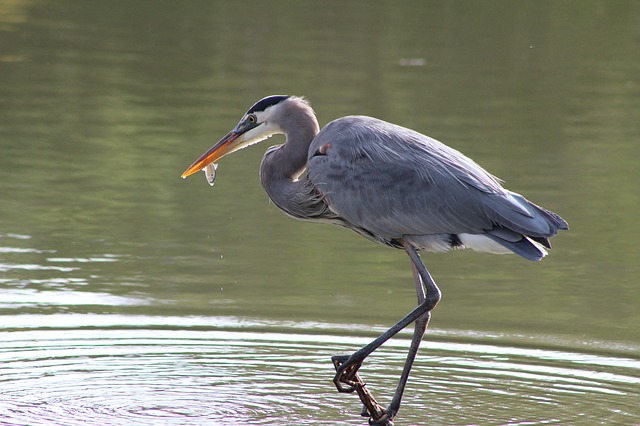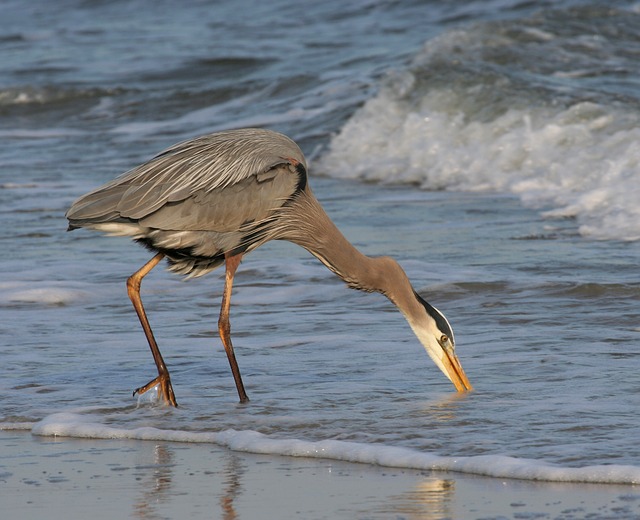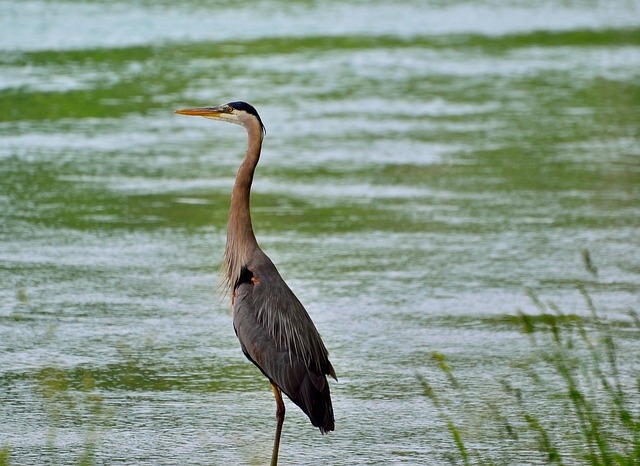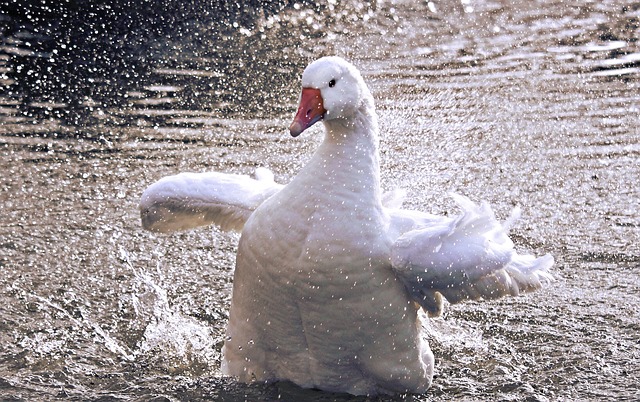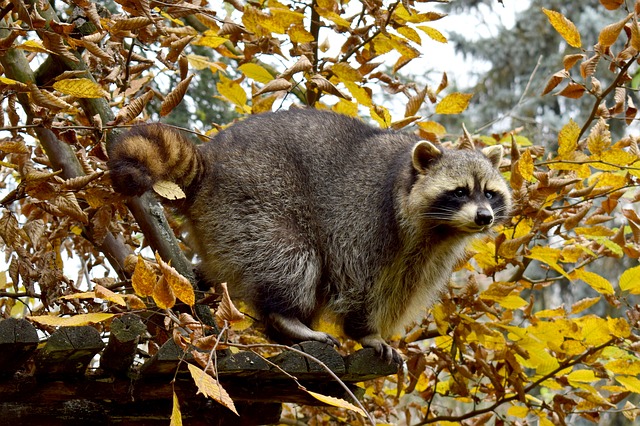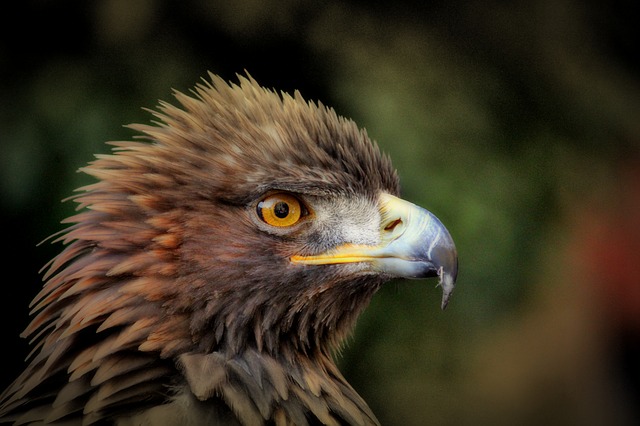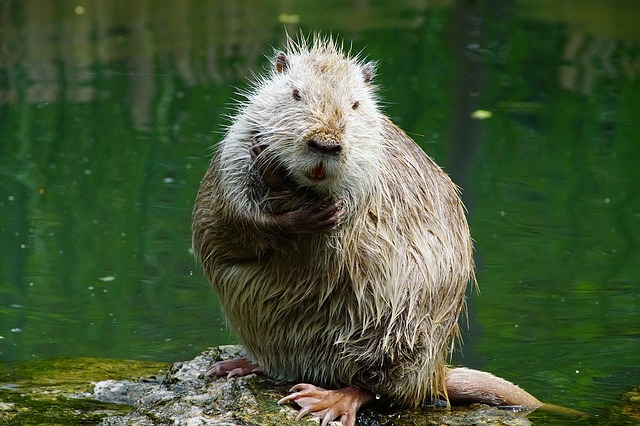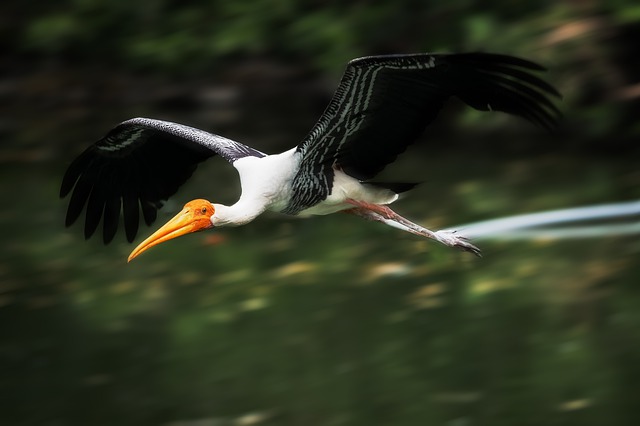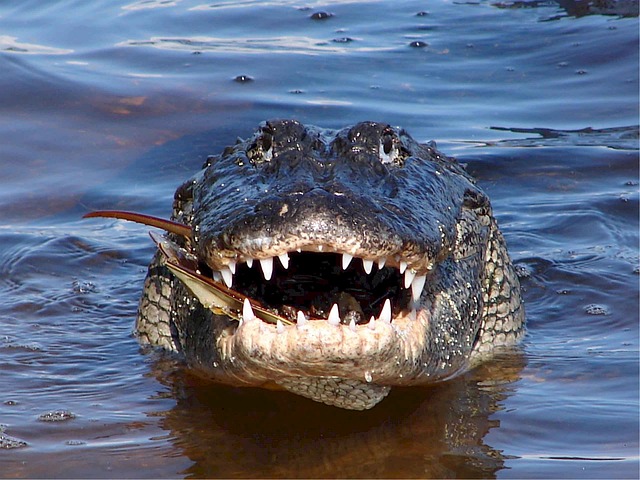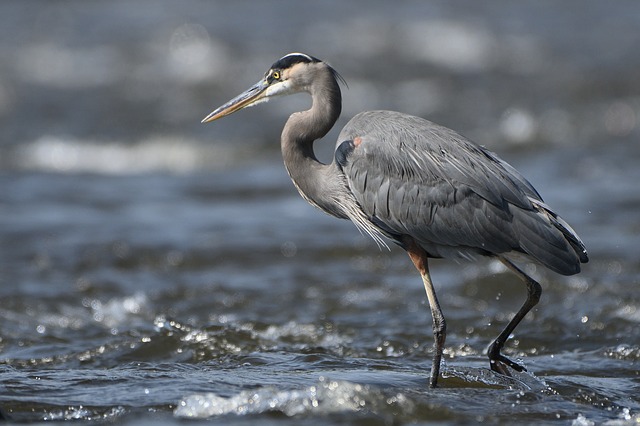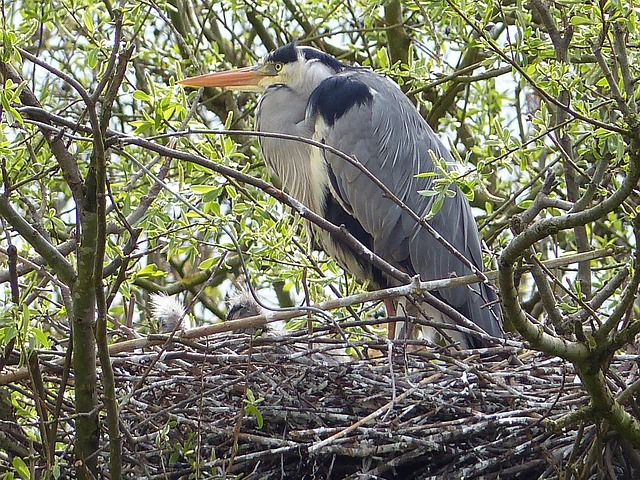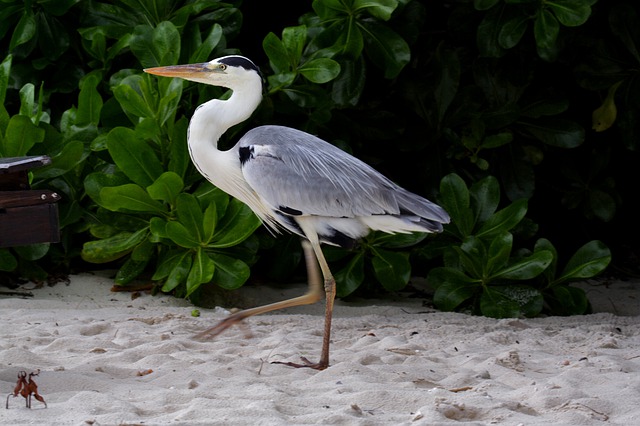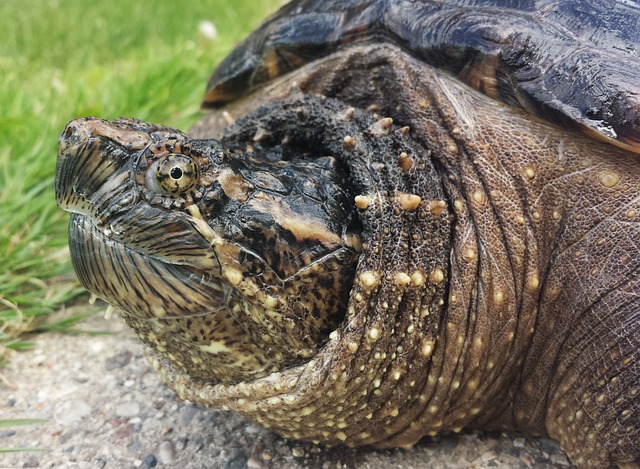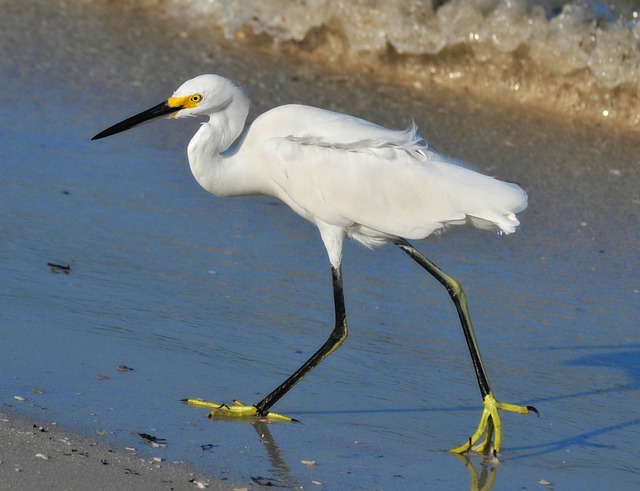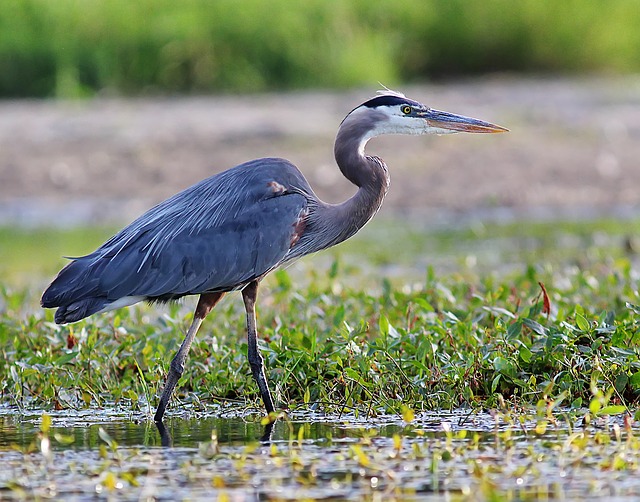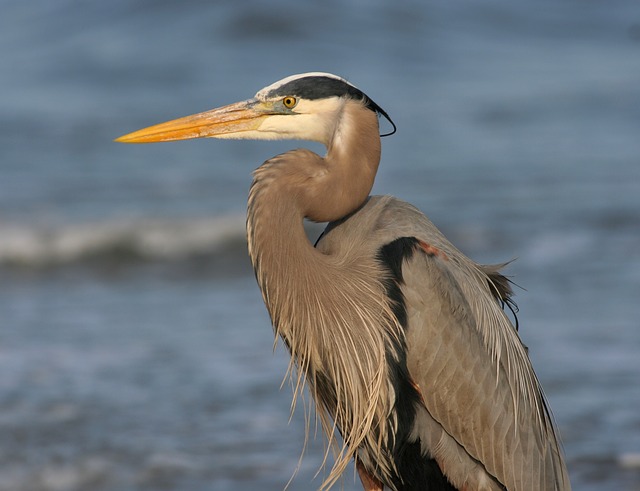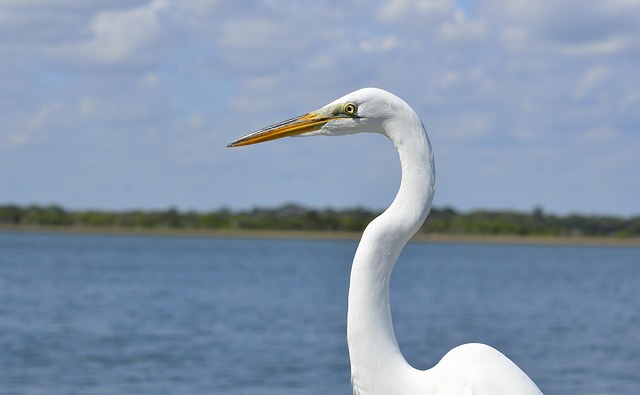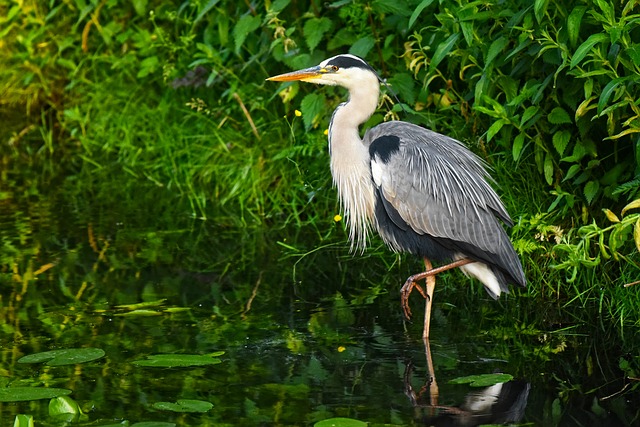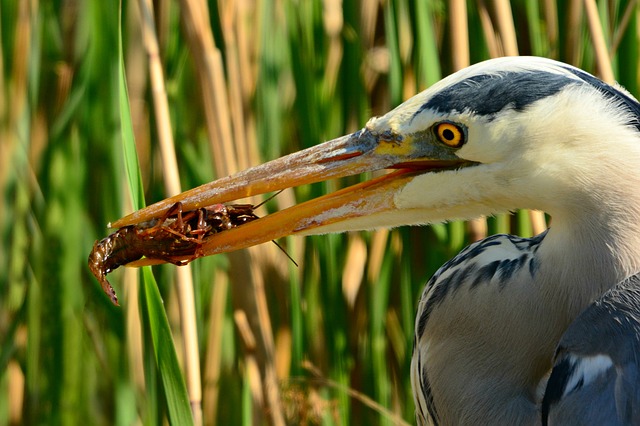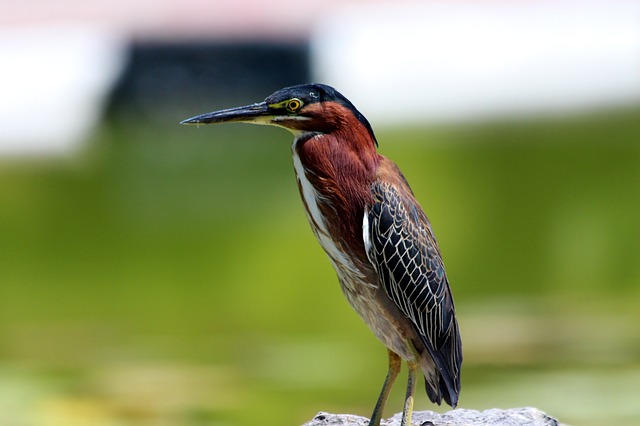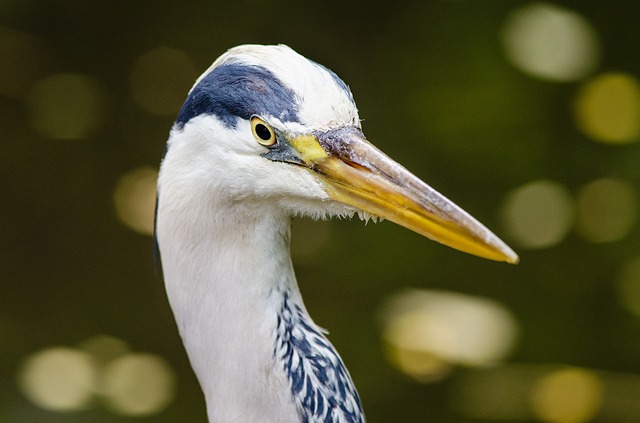
The life expectancy of birds is known to be closely related to their size. So as the biggest heron species in North America, how long do great blue herons live? The average life expectancy for these large birds is around fifteen years. However, surviving their first year is no easy task.
The Size-Age Connection
Great blue herons reach heights of four and a half feet and can have wingspans of up to six and a half feet wide. As a general rule, it’s accepted that the size of a bird correlates to its lifespan. So it’s no wonder great blue herons have a much longer lifespan than most smaller birds.
In fact, the oldest great blue heron on record is believed to be at least twenty-four. Flamingoes are another example of this general rule as these tall birds have an average lifespan of thirty years or more.
The Dangers Young Herons Face
While great blue herons live to an older age than many other bird species, there are also many perils and challenges they must face early on and often even before even hatching. Despite the fact that herons typically lay from three to six eggs in an average brood only two young herons on average will survive.
Herons are extremely sensitive when nesting and may abandon nests, young, and breeding colonies if they are disturbed by humans. While adult herons don’t have many predators once full-grown, many animals eat young herons and heron eggs. Predators such as raccoons, opossums, minks, and alligators are common threats among a handful of others.
Eagles in particular are a big threat, especially bald eagles. And just like when disturbed by humans, when there is a persistent eagle threat herons may abandon their nests completely.
In times when food is hard to find the weakest hatchlings typically die of starvation and then there is always the threat of simply falling out of the nest. Cold weather, windstorms, and heavy rain during hatching also commonly cause the death of baby herons.
High-Mortality Rate
Things don’t get any easier for young herons, at least not at first. Past studies on banded great blue herons in North America have shown that after leaving the nest the mortality rate for the first year of their life is around seventy percent. These are usually due to mistakes made because of the birds’ lack of experience. However, after the first year, the death rate decreases steadily.
Challenges Of Adult Herons
As adults, great blue herons have few predators, because of their large size and sharp beak they are simply too much to handle for most animals. However many herons are killed each year and often illegally by humans. Herons primarily eat fish which can cause them to get into trouble when it comes to stealing fish from commercial fish farms and backyard ponds.
There are a few ways to efficiently and humanely deter herons such as by using a heron decoy for example. Decoys trick these territorial feeders into thinking that another heron has already claimed the area, so they won’t land. However, a bullet is unfortunately sometimes used instead.
Because herons are at the top of the food chain they are affected by toxins. While we don’t know the full effects of the toxins on adult birds it does affect their reproduction. Mercury, selenium, and PCBs, in particular, have been proven to cause their eggshells to become too fragile to survive normal incubation.
Last but not least draining wetlands and the loss of other feeding habitats for development can drastically impact the reproduction rate of local heron populations. This is due to the fact that the number of breeding great blue herons is directly related to the amount of feeding habitat available.
Great blue herons are special and unique birds. While they can be considered pests in some circumstances deterrents are always the best solution. And to help ensure great blue herons live as long as possible feeding habitats and breeding areas need to be protected.
Start Shopping for Birding Supplies!
Goose Pictures
Geese are a group of waterfowl species that belong to the family Anatidae. Not only are they beautiful but there are many interesting things about them. We’ve compiled some of the best goose pictures to show you just how amazing these creatures are. Snow Goose The...
Raccoon Pictures
Raccoons are easily recognizable by their black face mask and ringed tail. And there are many fascinating things about this intelligent nocturnal species. So we’ve compiled some of the best raccoon pictures to show you just how amazing and unique they are. Raccoon...
Eagle Pictures
Eagles are large powerful raptors with sharp talons and beaks. These apex predators are typically at top of the food chain and there are many interesting things about them. So we’ve compiled some of the best eagle pictures to show you just how amazing they are. Bald...
Nutria Pictures
Nutria are large semi-aquatic rodents from South America. In the United States where they were originally imported for the fur industry, they are an invasive species. Despite their pest status, there are many interesting things about them. So here are some of the best...
Stork Pictures
Storks are tall wading birds with long legs and necks. These amazing birds have many fascinating things about them. And we’ve compiled some of the top stork pictures to help show you just how interesting and beautiful they are. White Stork The white stork has a body...
Alligator Pictures
The American alligator is a large predatory reptile that inhabits the southeastern United States. It’s a fascinating animal with many interesting things about it. And we’ve collected some of the best alligator pictures to help show you just how amazing they are....
Where Do Great Blue Herons Live?
The great blue heron is considered to be the most widespread heron in North America. So exactly where do great blue herons live? Here’s what you’ll want to know. Great Blue Heron Range The great blue heron is found throughout most of the North American continent. In...
Where Do Great Blue Herons Nest?
While many of us have seen great blue herons their nesting habits often remain a mystery to most people. That’s because they purposely nest in hard-to-reach places. So where do great blue herons nest? Here’s the answer. A Colony Nester Typically great blue herons nest...
Do Great Blue Herons Migrate?
Do great blue herons migrate? This is something many people wonder about, especially if they’ve seen a heron during the cold winter months. And the answer is both yes and no. Here’s what you’ll want to know. Great Blue Heron Range The great blue heron has a large...
Great Blue Heron Pictures
Few species of birds are as tall, elegant, and attractive as the great blue heron. So we’ve compiled some of the best great blue heron pictures for you to admire and help you to learn more about this amazing bird! Great Blue Heron Head The head of the great blue heron...
What Do Snapping Turtles Eat?
Many people are familiar with the fact that snapping turtles have an incredibly strong bite. They use their strong jaws and sharp beak not just for defense but also for catching food. So what do snapping turtles eat? Here's what you'll want to know. Snapping turtles...
Birds That Look Like Egrets
Egrets are predatory birds that hunt and live in a range of both freshwater and saltwater habitats. These birds are usually white, and have S-shaped necks, long legs, and dagger-like beaks. However, they are often mistaken for several other types of birds that look...
Birds That Look Like Storks
Storks are large wading birds with robust bills and long legs. These tall carnivorous birds are well-known for their wide wingspans and also for building huge nests. However, they are often confused with several other bird types that have a similar appearance. So...
Birds That Look Like Herons
Herons are tall birds with long slender legs and necks. And they often wade in the water when hunting for food. Yet there are several other types of birds that may be mistaken for them. To make things more confusing many of these birds also spend time in the water and...
Great Blue Heron Facts
The great blue heron is named for its size and the grey-blue color on its wings, stomach, and back. This species has many fascinating things about it. So here are the top great blue heron facts. It's The Largest North American Heron The great blue heron is a big bird...
Are There White Herons?
Are there white herons? This is something many people wonder especially after seeing a tall all-white bird. The answer is yes! And here’s a fast introduction to them. A White Color Morph Most people are familiar with the great blue heron, a large predatory and...
Great White Heron Facts
While many people are familiar with the great blue heron, they are often surprised to find out that there’s also a great white heron. There are many things you’ll want to know about this stunning bird. So here are the top great white heron facts. The Great White Heron...
What Animals Eat Herons?
Because of their size and long sharp beaks, it can be hard to imagine that herons have any natural predators. While they do, they definitely don’t have nearly as many predators as most other types of birds. So what animals eat herons? Predators Of Adult Herons For...
What Do Herons Eat?
Great blue herons are often seen slowly wading in shallow water hunting for food. You may have even spotted one of these large birds in your own backyard pond. This leaves many people wondering: “What do great blue herons eat?” And here’s everything you’ll need to...
What Do Green Herons Eat?
The green heron is a secretive and small heron species. What it lacks in size however it makes up for in intelligence. It is particularly well-known for how it uses its smarts when hunting for food. So what do green herons eat? Read on to find out. Meet The Green...
